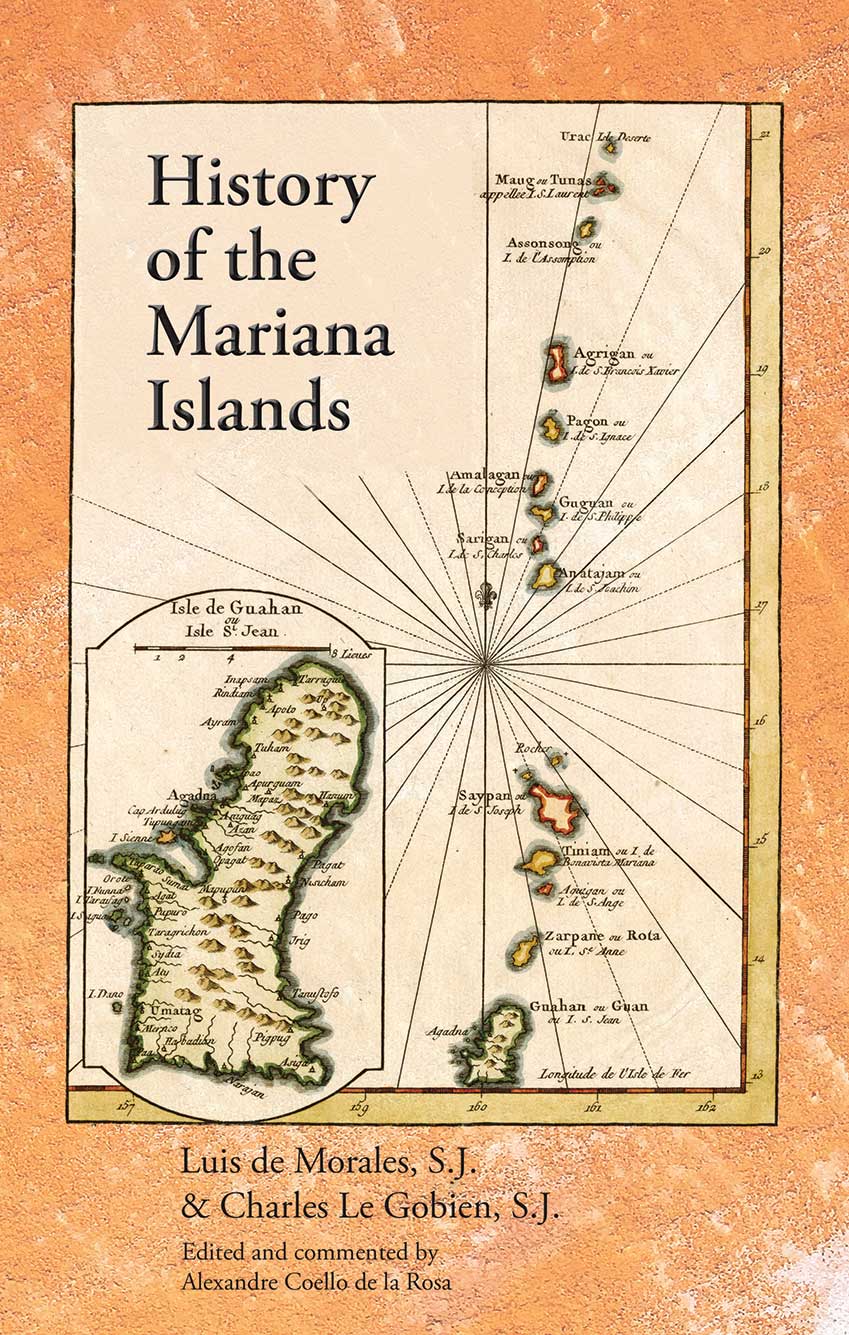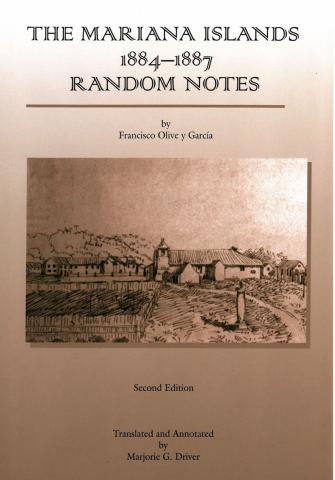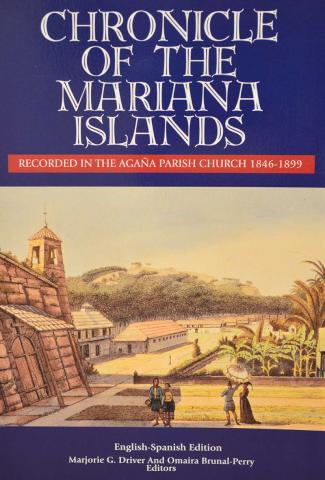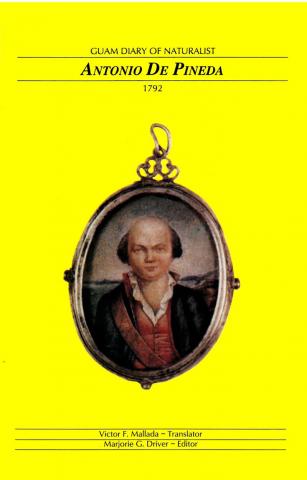- Home
-
Admissions
-
Academics
-
Students
-
Research
-
Research Centers
- Cancer Research Center
- Center for Excellence in Development Disabilities Education, Research & Service (CEDDERS)
- Center for Island Sustainability (CIS)
- Marine Laboratory
- Micronesian Area Research Center (MARC)
- Water and Environmental Research Institute (WERI)
- Western Pacific Tropical Research Center (WPTRC)
-
Research Centers
-
Outreach
- Giving
- Alumni
-
About
You are here

MARC Publications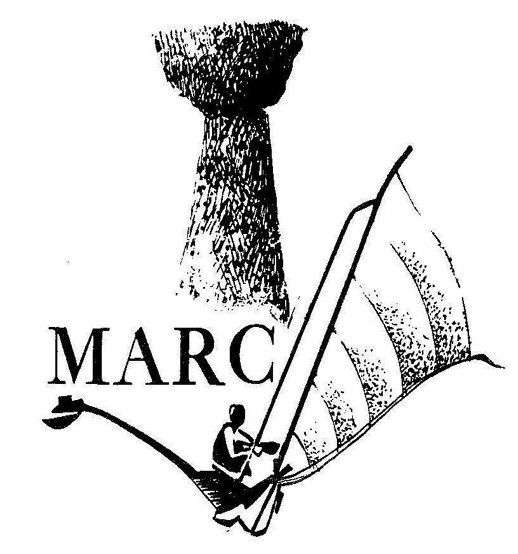
The Richard Flores Taitano Micronesian Area Research Center (MARC) has been publishing research-based, evidence-driven academic texts primarily focused on historical and contemporary issues impacting the social, political, economic, and sustainable development of Western Pacific islands and communities for over 30 years.
MARC Publications include a variety of historical texts about Guam and Micronesia dating back to the late 1600s. From Spanish and other European accounts of their travels to the Marianas to the history of baseball in Palau, MARC Publications offers readers an extensive collection to choose from.
MARC Publications also include a series of working papers and other resources available upon email request at uogpress@triton.uog.edu. Please find the full listing of MARC Publications, Working Papers and Resources in our Catalog (provide link to catalog here).
MARC e-publications
In partnership with Guampedia, MARC Publications also has free e-publications available on the Guampedia website.
Available MARC Publications
History of the Mariana Islands
Luis de Morales, S.J. & Charles Le Gobien, S.J. Edited and commented by: Alexandre Coello de la Rosa
Histoire des isles Marianes (History of the Mariana Islands), written in Paris in 1700, provides a detailed glimpse into a tumultuous and critically significant period in the history of the Mariana Islands and the Chamorro people – the period commonly referred to as the Spanish-Chamorro Wars.
The Mariana Islands, 1884-1887: Random Notes (Second Edition)
Francisco Olive y Garcia, Translated and Annotated by: Marjorie G. Driver
This report written by Governor Francisco Olive contains his insights about the social, political, and economic conditions of the Marianas. He focuses on the underdevelopment of the islands and draws the Spanish Government to look back at the colony’s history, specifically the second half of the 19th century. The report reflects the colonial mentality of Olive, who stresses the responsibility of the Spanish Government to the inhabitants of the Marianas, leaving unchallenged the right of Spain to maintain its sovereignty over the islands.
Chronicle of the Mariana Islands Recorded in the Agaña Parish Church 1846-1899
Father Aniceto Ibanez del Carmen, O.A.R. & Father Francisco Resano del Corazón de Jesús, O.A.R. o Translated, Annotated, and Edited by: Marjorie G. Driver & Omaira Brunal-Perry
Over time, the CHamoru people of the Mariana Islands have been subjected to the ravishes of natural disasters, pestilence, war, and myriads of disquieting circumstances. After the arrival of the Spanish missionaries in the islands, such events were recorded, first by the Jesuits (1668-1769), and later by their successors, the Augustinian Recollects (1789-1908). The many Jesuit records have long been available; those of the Augustinians have been conspicuous by their absence. In 1969, an abridged version of a long sought after nineteenth century register, or chronicle, known to have been kept in the Hagåtña parish church was presented to the Micronesian Area Research Center, thereby confirming the survival of at least portions of the parish's Libro de cosas notables (The Book of Notable Things). For today’s readers, the Chronicle of the Mariana Islands is a treasure-trove of Chamorro nineteenth century memorabilia.
Guam Diary of Naturalist Antonio De Pineda, 1792
Marjorie G. Driver (Editor), Victor F. Mallada (Translator)
Antonio de Pineda y Ramirez was both a military officer and scientist for the Spanish crown, being most famous for his botanical research. Heading the scientific expedition under the auspices of King Carlos III, he sailed across the world collecting data in different countries, which eventually lead him to the Mariana Islands in 1792. After spending twelve days on Guam, he observed both the geological and zoological aspects of Fort Santo Angel, a small fortification at the entrance to Umatac Bay. Shortly after his departure from Guam, he passed away, leaving behind valuable scientific information about the island.
Pages
- 1
